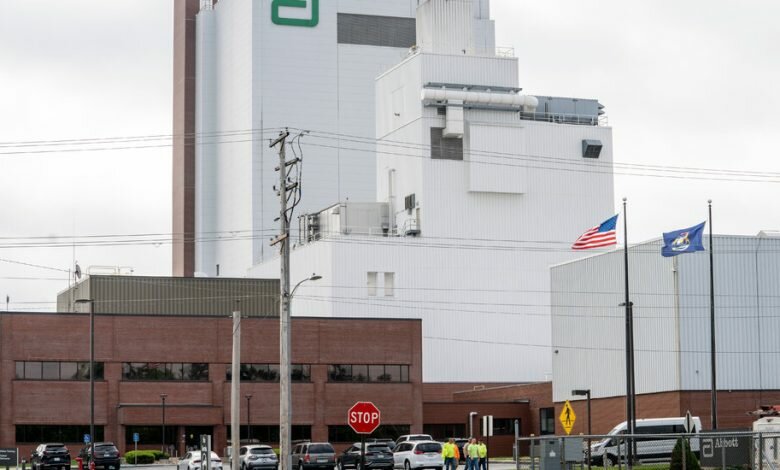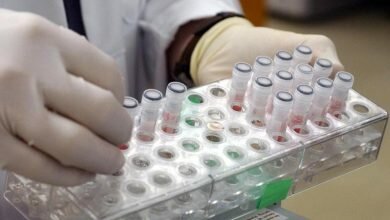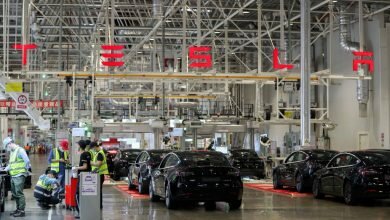Baby formula plant that shuts down and fuels crisis, resumes production

Abbott Nutrition, the company that shut down a major production plant in February over contamination concerns fueling a national shortage of baby formula at the time, said on Saturday that the site has resumed production of Elecare and other formulas. has started from.
Relaunching the plant in Sturgis, Michigan, which was the result of an agreement with the federal Food and Drug Administration, raised hope that the lack of formula has left stressed parents scrambling.
According to Dataassembly, which tracks retail data, out-of-stock rates at stores across the country had risen to nearly 74 percent for the week ended May 28. The crisis, which lasted for months and stemmed from pandemic supply issues, was worsened by plant closures.
Abbott said in a statement that Alecare would be released to consumers around June 20 and that it was “working hard” to resume production of Similac and other formulas.
“We understand the urgent need for formula and our top priority is to get high quality, safe formula into the hands of families across America,” the company said. “We will ramp up production as quickly as possible while meeting all requirements.”
Read more about the scarcity of baby formula
In February, Abbott announced that it was voluntarily recalling three types of infant formula after four infants who were fed formula manufactured at the Sturgis plant became ill with a bacterial infection.
The FDA had received three consumer complaints about Cronobacter sakazaki, a bacterium that can cause serious, life-threatening infections or inflammation of the membranes that protect the brain and spine. Abbott has said there was no “conclusive evidence” linking the company’s formula to diseases.
Food and Drug Administration commissioner Dr. Robert M. Calif told a house panel last month that the Sturgis plant’s roof was leaking, water had accumulated on the floor, and production equipment had developed cracks, allowing bacteria to enter. could and could remain.
He described the conditions as “extremely unhygienic” but he also acknowledged that his agency was too slow to resolve problems at the plant.
In a statement Saturday, the FDA said investigators were at the Sturgis plant for several days to inspect floor, ceiling and equipment improvements made at the facility. Abbott reported that the facility tested negative for Cronobacter, the agency said.
A consent decree signed with the government provides a range of new safety measures, including hiring a qualified specialist to oversee improvements to the plant and notifying the FDA if any contamination is detected.
The agency said Saturday that the steps it has taken, and the restarting of the Sturgis plant, “will mean that more and more infant formula is either on the way or is already rolling out onto store shelves.”
Plant closures exacerbated the current supply crisis, as parents rushed to stock up on formula, sometimes driving for hours, as networks on social media helped them connect with dwindling supplies.
Navigating the Baby Formula Shortage in the US
card 1 of 6
a growing problem. A nationwide shortage of baby formula — triggered by supply-chain issues and worsened by a recall by baby food maker Abbott Nutrition — has left parents confused and worried. Here are some ways to manage this uncertainty:
Finding the formula If your baby’s formula was not affected by the recall but is still not available, you can call a local store to ask when they expect to have it back in stock. You can buy it online also. If your baby is on special formula, check with your doctor’s office: They may have samples in stock.
Choosing a new formula. If you usually use a name-brand formula, look for a generic version of it. Alternatively, look for a new formula that matches the ingredients listed in your general. If your baby is on a particular formula for health reasons, check with your pediatrician before switching.
Transition to a new product. Ideally, you’ll want to change your baby gradually. Begin by mixing three-quarters of your normal formula with one-quarter of the new one and gradually phase out the old product. If you can’t transition slowly because you’ve gone out of your normal formula, that’s okay, although you may notice more gas or nervousness during the transition.
what not to do. If you can’t find your baby’s normal formula, don’t make your own – homemade formulas are often nutritionally inadequate and run the risk of contamination. Try not to “stretch” your formula by adding extra water, and don’t buy it from online marketplaces like Craigslist. For a child under 1 year old, do not use toddler formula.
With store shelves bare in some communities, some parents have become so desperate that they have fed their infants powdered oatmeal cereals and fruit juices, even though the pediatrician has been feeding nutritionists from birth to the baby’s first birthday. recommend formula or breast milk as important sources of
In the short term, imports from Europe and elsewhere, announced by the White House, are expected to play a bigger role in bridging shortages than restarting the Sturgis plant, said Steven A. Abrams, professor of pediatrics at Dell Medical School at the university. Texas in Austin said on Saturday.
The reopening of the Abbott plant will be a relief to parents of children with severe allergies as Elecare is ready for them, said Dr. Abrams.
“What most families are facing at the grocery store will be the huge impact of importing formulas from British, Australian and Mexican sources,” he said.
Source




